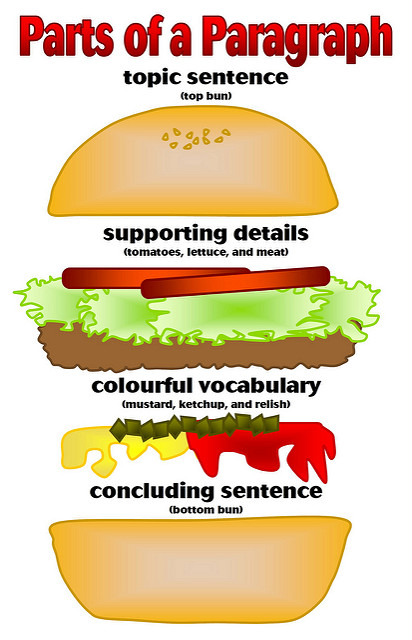Learning Objectives
- Identify strategies for using thesis statements to predict content of texts
We’ve learned that a thesis statement conveys the primary message of an entire piece of text. Now, let’s look at the next level of important sentences in a piece of text: topic sentences in each paragraph.
A useful metaphor would be to think of the thesis statement of a text as a general: it controls all the major decisions of the writing. There is only one thesis statement in a text. Topic sentences, in this relationship, serve as captains: they organize and sub-divide the overall goals of a writing into individual components. Each paragraph will have a topic sentence.

It might be helpful to think of a topic sentence as working in two directions simultaneously. It relates the paragraph to the essay’s thesis, and thereby acts as a signpost for the argument of the paper as a whole, but it also defines the scope of the paragraph itself. For example, consider the following topic sentence:
Many characters in Lorraine Hansberry’s play A Raisin in the Sun have one particular dream in which they are following, though the character Walter pursues his most aggressively.
If this sentence controls the paragraph that follows, then all sentences in the paragraph must relate in some way to Walter and the pursuit of his dream.
Topic sentences often act like tiny thesis statements. Like a thesis statement, a topic sentence makes a claim of some sort. As the thesis statement is the unifying force in the essay, so the topic sentence must be the unifying force in the paragraph. Further, as is the case with the thesis statement, when the topic sentence makes a claim, the paragraph which follows must expand, describe, or prove it in some way. Topic sentences make a point and give reasons or examples to support it.
The topic sentence is often, though not always, the first sentence of a paragraph.
Candela Citations
- Revision and Adaptation. Provided by: Lumen Learning. License: CC BY-SA: Attribution-ShareAlike
- Topic Sentences. Authored by: Ms. Beardslee. Located at: http://msbeardslee.wikispaces.com/Topic+Sentences?showComments=1. License: CC BY-SA: Attribution-ShareAlike
- Image of Parts of a Paragraph. Authored by: Enokson. Located at: https://flic.kr/p/ak9H3v. License: CC BY: Attribution
